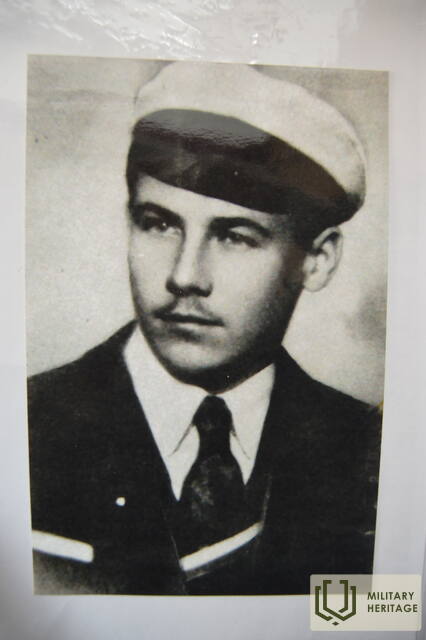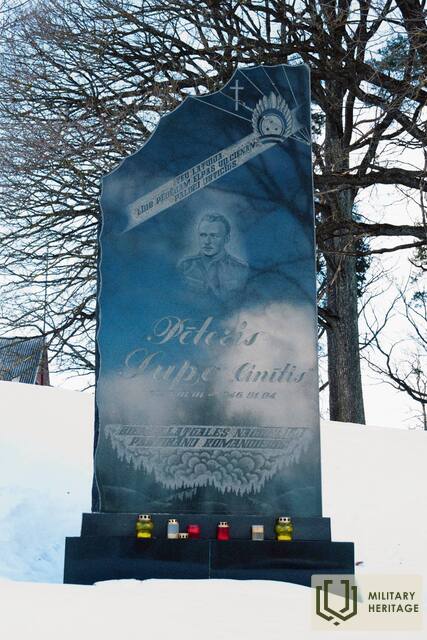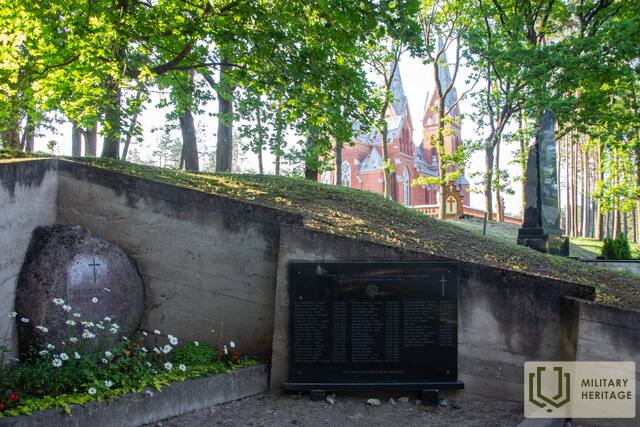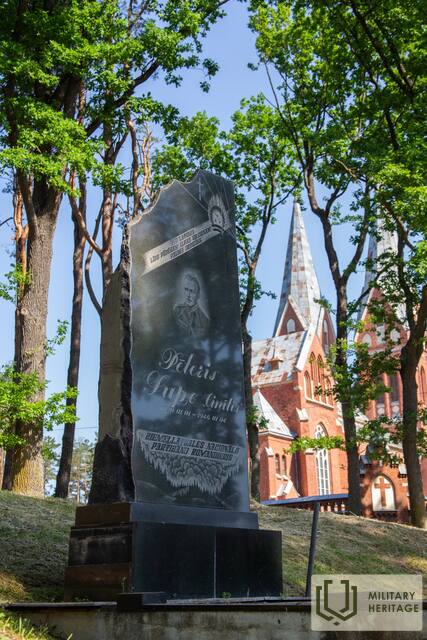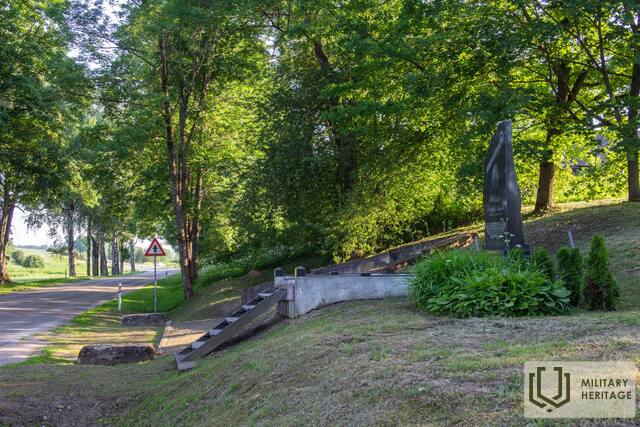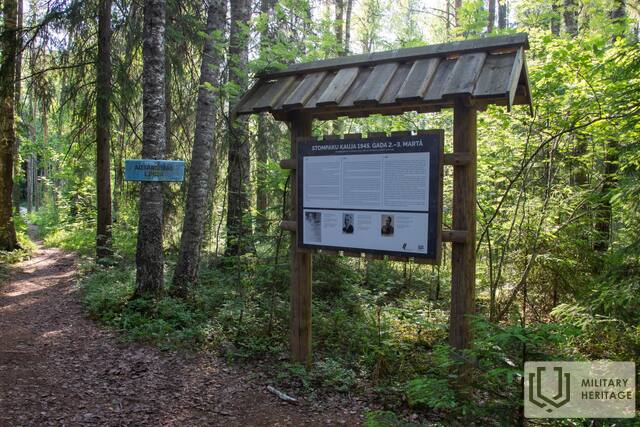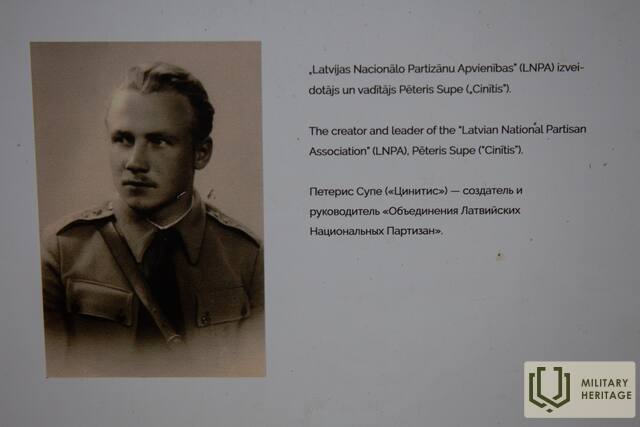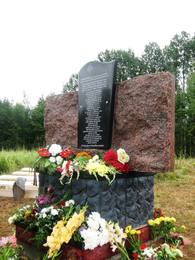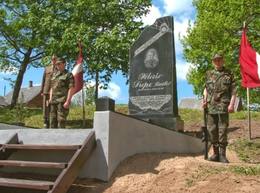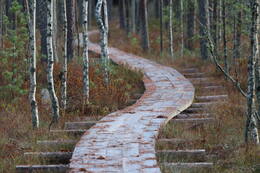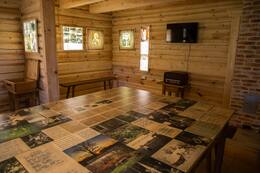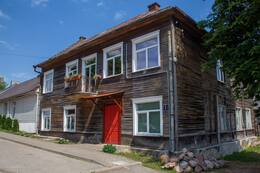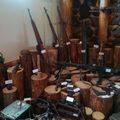Pēteris Supe - the initiator of the founding of the Latvian National Partisan Association
From 1944 to 1946, Peter Supem managed to unite the national partisan units scattered in the forests in an organized movement that fought against the occupation of Latvia in the Abrene district for several years after the Second World War. Pēteris Supe, nicknamed "Cinītis", was one of the most outstanding organizers and leaders of the national guerrilla movement in Northern Latgale.
Pēteris Supe was born in 1920 in Abrene district, Purvmala parish, in the house of the new Garden. As a child, he was active in the small regiment movement and was the only one in the whole county to get the name "Līdumnieks". At the age of 17 he graduated from the gymnasium in Vilaka, then studied at the Faculty of Agriculture of the University of Latvia in Jelgava and at the age of 20 he became a graduate agronomist.
His contemporaries described him as a very enterprising, able-bodied and nationally even fanatical person with good talents as an orator and psychologist. During the German occupation, he was the chief agronomist of the Abrene district. When the Soviet army approached Latgale and Vidzeme at the end of 1944, P.Supe went as a refugee to return to his homeland already as the commander of a German intelligence group, but it must be emphasized that as a true patriot, he did not want to serve either the German or Russian Soviet side. The Germans prepared the former agronomist in the so-called "forest cat" units for battles behind the opponent, but P. Supe, hoping for Western help to restore Latvia's independence, chose a different path. In one of the first reconnaissance missions on the German side of Abrene, finding a large number of Latvians called up to the Red Army but then deserted, he demanded that the Germans send weapons to form armed groups on a plane, but received a refusal. The war was not over when, in the autumn of 1944, Supe decided to give up his service to the Germans and start organizing a national resistance movement.
Peteris Supe was the initiator of the founding of the Latvian National Partisan Association (LNPA- ability to operate until 1953), his deputy was Stanislavs Ločmelis (“Ace”), a former student of the Faculty of Economics of the University of Latvia. The founding meeting took place on December 10, 1944, in the woods near Stompaku village. They had their own headquarters, propaganda, economic and counter-intelligence departments, a court and even a newspaper. At the time of its foundation, it had 123 men, but already in 1945, according to the Viļaka district war commissariat, 1,000 men and soon the organization was under the control of partisan groups in Vilaka, Aluksne, Valka, Gulbene, Cesis and partly in Madona district.
At the beginning of January 1945, the partisans of the LNPA, by order of P. Supe, began to gather in the Stompak bogs between Balvi and Vilaka, where a camp was established on several bog islands, which without exaggeration can be considered the largest partisan camp in the entire Baltic region. Its official name for the partisans was "Island Homes", but it was also popularly called "New Berlin".
The activities of P. Supese's partisans were characterized by an uncompromising war in which Soviet activists fighting guerrillas were killed without hesitation. P. Supe's partisans also won the famous Battle of Stompaku in early March 1945, defending their well-established base in the islands of the Stompaku bog. It became the biggest battle in the entire history of the Latvian national partisan movement, in which 300 soldiers took part on the partisan side and more than 560 on the Soviet side. As a talented commander, he had every opportunity to gradually turn the national guerrilla war in Latvia from the struggle of separate units into an all-encompassing, well-run movement, unless on April 1, 1946, Peter Supi had been shot by the Czech agent Jānis Klimkāns. P.Supe was killed during a partisan meeting in Jaungulbene parish, when the traitor Jānis Klimkāns opened fire on P.Supe and his deputy Henriks Auseklis (Tāraudu).
Latvian news, 2005,
Soviet occupation of Latvia, late 1944 -50. Establishment and operation of the Latvian National Partisan Association in the Stompak period
Related timeline
Related topics
Related objects
Monument to members of the resistance movement in Stompakis
It is located 15 km from Balvi in the direction of Viļakas, on the right side of the road.
A memorial is visible.
The memorial to the members of the resistance movement, dedicated to the memory of the national partisans of Pēteras Supes who fell in the battles of March 2 and 3, 1945, on the side of the Balva - Viļaka highway opposite the Stompaki swamp, was opened on August 11, 2011, on the day of remembrance of Latvian freedom fighters. At the end of July, a capsule with a message for future generations was embedded in the base of the monument. A document with the names of 28 national partisans who fell in the battles of March 2 and 3, 1945 is placed in the capsule.
"In February 1945, Latvia's largest national partisan camp was established on the islands of the Stompaku swamp, which the people began to call the islands of the Stompaku swamp, 2 km from the Balvu - Viļaka highway, where 360 people lived in 22 dugouts. Among them, some legionnaires who, for the legion division retreating, they had stayed at their father's house with all their weapons. In order to destroy the partisans, on March 2, 1945, the soldiers of two battalions of Czech troops attacked the dugouts together with destroyers, which also had four mortars in their armament. The battles took place all day, the partisans resisted stubbornly, and the attackers suffered suffered great losses, so that they could not capture the camp and destroy the partisans. 28 inhabitants of the Stompaku swamp had also fallen or died after being seriously injured in the battle. The next night, the partisans broke the siege of the camp with a battle and left undefeated" - this is what a member of the national resistance movement of the award department writes about the Stompaku battle chairman of the case commission, Zigfrīds Berķis.
Monument to the commander of the North-Eastern national partisans Pēteris Sup - "Cinītis"
Honoring the memory of the national partisan commander Pēteras Supes, on May 28, 2005, a monument dedicated to him was unveiled in Vilakas. It is placed near the Viļaka Catholic Church, on the edge of the trenches dug during the war, where the Chekists buried the shot national partisans. A capsule with the names of 386 fallen national partisans, battle descriptions and materials about the partisan commander is placed under the monument dedicated to P.Supem. The words engraved in stone: "I remained faithful to you, Latvia, until my last breath".
The monument was created by Pēteris Kravalis.
Next to it is a memorial place in the Stompaki forest and other places of battle for Latvian freedom fighters who fell and were murdered by the Chekists in 1944-1956.
On June 20, 2008, a granite plaque with the names of 55 fallen partisans arranged in three columns was discovered on the right wall.
The monument was erected in the place where the communist occupation authorities once displayed the remains of the murdered partisans to intimidate the rest of the population.
Words of thanks to Pēteris Supe and a poem by Bronislava Martuževa are engraved on the adjacent plaque:
"Get up, Peter Supe,
Soul, in battle!
Today Your blood sacrifice,
Risen in the nation.
Go out to live forever
In the strength and vigor of the young,
Wraps, flutters, folds
In the rising flag!"
Trail and partisan memorial in Stompaki bog
The Stompaki Bog Area is a specially protected nature and NATURA 2000 territory located between the cities of Balvi and Viļaka. The eastern part of the bog features a marked 1.5-kilometre trail that crosses the forest and also a small part of the high bog (wooden footbridges), leading to five islands within the bog where the national partisans had built residential bunkers. Information stands along the edges of the trail tell about the local natural values and historical events. There is a rest area by the trail. Directions from the P35 road will help visitors find the trail. In early March 1945, one of the largest national partisan settlements in the Baltic States was established at the Stompaki Camp. About 350 to 360 people lived here, including 40 to 50 women. Starting from January 1945, national partisans carried out regular attacks on the military personnel of the occupation regime and their supporters. The camp had a bakery, a church bunker and 25 residential bunkers, immersed halfway into the ground, for accommodating 8 to 30 people. The bunker sites are still visible today. The Battle of Stompaki, the largest battle in the history of Latvian national partisan battles, took place here on 2-3 March 1945. The anti-partisan forces consisted of a total of about 483 soldiers, including subunits of the 2nd and 3rd Rifle Battalions of the 143rd Rifle Regiment of the NKVD 5th Rifle Division, the rifle platoon (armed with submachine guns), mortar company, reconnaissance and sapper platoons, as well as the so-called ‘istrebitel’ (destruction) fighters.
Broņislava Martuževa poetry barn
The Broņislava Martuževa Museum is situated on the site of the poet’s childhood home in Indrāni parish, Madona municipality. The museum’s exhibit is located in a renovated barn featuring voice and video evidence from the National Resistance Movement and the work of the poet in publishing an underground magazine, as well as composing poetry and songs for national partisans. Broņislava Martuževa was involved with the resistance movement since its inception. Lazdiņas, Martuževa’s home which has not survived, also served as a place of refuge for Pēteris Supe, Head of the Latvian National Partisan Association, and his comrades-in-arms. The poet spent five years hiding in the basement of her home, meeting with partisans, writing poetry (including work dedicated to partisans Pēteris Supe, Vilis Toms, Smilga Group, Laivenieks, Salns, Celmiņš, Bruno Dundurs and others), as well as writing songs and teaching them to partisans. Now, her songs are sung by the ‘Baltie lāči’ group (literally: ‘White Bears’). In 1950, the ‘Dzimtene’ magazine (literally: ‘Motherland’) was published underground together with Vilis Toms. The poet transcribed 11 issues of the magazine, 10 copies each, by hand. The poet, her brother, sister, mother and Vilis Toms were arrested in 1951. Bronislava Martuževa returned from Siberia in 1956. Recognised locally and nationally, the poetry barn is visited by both local residents and guests of the municipality. Learning about the poet’s life gives you the opportunity to discover the fate of Latvia.
Exposition “Abrene Rooms”
The exhibit ‘Abrene Rooms’ is located near the city centre of Viļaka. It covers the period from 1920 to 1960 when Viļaka was part of Jaunlatgale, Abrene district, and became the centre of Viļaka district and Abrene municipality. The exhibit is located in the building with the most interesting and diverse history in Viļaka. Initially located on the old Marienhausen Market Square, it later housed apartments, offices and various shops and, during World War II, the Latvian Self-Defence headquarters, the Gestapo and also the Cheka. The exhibit features items from the national partisan camp in the Stompaki Bog, which are related to the national partisan movement in the Latgale region, as well as documents and photos associated with the War of Independence. With a guided tour booked in advance, the owner, Dzintars Dvinskis, will present the testimonies available in the exhibit.
In 2023, an exhibition for military heritage in Northern Latgale was created.
Museum of the National Resistance Movement in Renda
The museum is located a few kilometres from the centre of Renda parish. The exhibit tells about the 50-year-long resistance movement in Latvia: resistance to the first Soviet occupation, resistance to the Nazi German occupation, and the armed and non-violent resistance to the Soviet occupation. The exhibit is located in two buildings. The first building houses evidence of the first Soviet occupation and German occupation. The exhibit showcases a restored barn building where the focus lies on the National Partisan War. Between the two buildings there is a bunker with an authentic layout and trenches used by soldiers. Located near the museum in Renda, excavations, blindages and an obstacle course serve as a training ground for youth guards and anyone interested. Visits must be booked in advance.
One of the largest battles of the national partisans, called the Āpūznieki Battle, took place in January 1946 not far from here. The battle saw the Kabile National Partisan Group overpower much larger forces of the occupying power. Featuring information stands, the battle site is now home to a rest area.
Vilaka Museum
Viļaka Museum operates in two buildings – the Catholic parish house, built in 1913, which is an important cultural heritage object of the town, and the other building of the museum – a former monastery of Capuchin monks, whose cellars are closely related to the national partisan movement in Stom paki and the Soviet Cheka. According to the memories of the locals, people were held and tortured in these cellars. The old museum building houses several exhibitions, with one of the exhibitions dedicated to the 1920 freedom battles in Northern Latgale, and the second – to the events of the Second World War – the Jewish Holocaust in Viļaka and information about the families who were shot. More information about each family is available based on their street address.
The exhibition is supplemented by information about the national partisan movement in Stompaki – various testimonies, photographs and objects. Visitors can learn about the military heritage sites in and around Viļaka, such as the Freedom Fighters Monu ment in Jaškova, which was demolished during the Soviet era and restored in 1990, and the stele dedicated to the recipients of the Order of Lāčplēsis. The sound of World War II aircraft is incorporated into the exhibition of the museum, as the German Luftwaffe airfield was located near Viļaka. The museum offers an opportunity to see some memories of the Second World War events in Viļaka, as well as to receive information about the German prisoner-of-war camp in Rači




